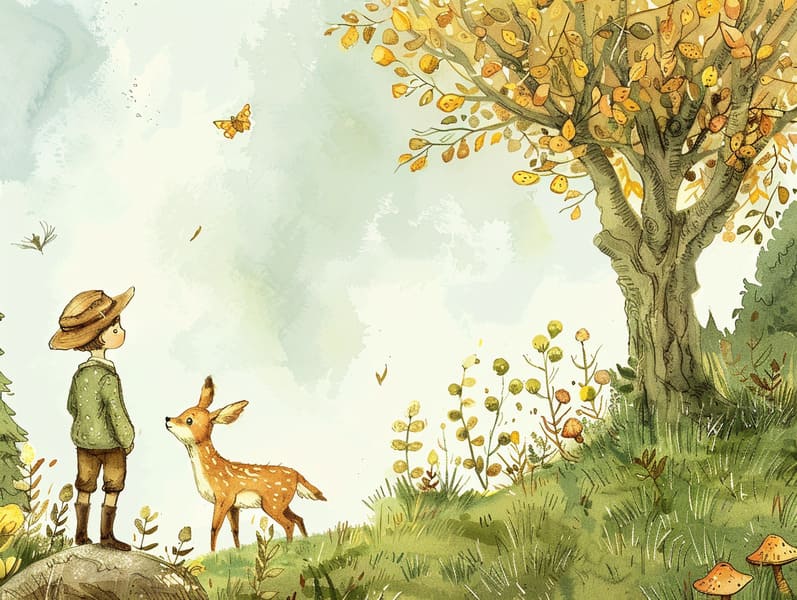
Best fairy tales have timeless appeal. These stories have been spoken from one generation to the next ages before they were ever transcribed. They sprang from a variety of civilizations, including European traditions. They were initially passed along among adults, often carrying themes and messages related to the societal norms and beliefs of the time.
Jacob and Wilhelm Grimm, Jacob and Wilhelm (the Grimm brothers), were among the first to collect many of these beloved fairy tales. Their anthology, "Grimm's Fairy Tales," included tales like "The Story of Cinderella," "The Bread Crumb Trail," and "Snow-White and Rose-Red," which have since become staples in the world of classic fairy tales. Similarly, Andersen's imaginative tales, such as "The Mermaid's Tale," and "The Story of the Ugly Duckling," have floated into hearts worldwide, establishing their place in the pantheon of timeless fairy tales.
Despite their ancient origins, these tales remain as significant as ever, especially as kids' bedtime tales. These enchanting tales are now available in multiple formats, including artistically illustrated books, delightful animations, and web-based fairy tales.
Their lasting appeal can be attributed to several fascinating points:
Crucial Morals: Ancient fairy tales often impart important moral lessons. Tales like "The Tale of the Boy Who Cried Wolf" teach the virtue of honesty, while "The Story of the Tortoise and the Hare" point out the benefits of persistence and unpretentiousness. These tales offer young ones clear distinctions between good and bad, guiding their moral compass in a subtle yet impactful way.
Empathy and Awareness: Fairy tales frequently feature heroes facing difficulties and adversities, inciting children to feel with their struggles and celebrate their triumphs. For instance, "Beauty's Beast" points out the value of valuing inner qualities to appreciate the inner being of a being, cultivating empathy and awareness.
Cultural Awareness: Many traditional fairy tales are steeped in the cultural contexts from which they emerged. Delving into these narratives can provide delightful insights into different beliefs, advancing a sense of global appreciation and perception.
Fantasy and Innovation: The magical elements in timeless fairy tales—talking animals—fire up children’s fantasies. These narratives lead readers to otherworldly realms, promoting inventive ideas and a sense of magic that remains a lifetime.
Classic fairy tales are not only magical but also instructive. They function as fantastical tools in advancing various mental and emotional abilities in the young. When ancient fairy tales are narrated, they develop speech development by teaching new vocabulary and intricate sentence structures. This practice also promotes auditory skills and mindfulness, as young readers keep up with the story, enthusiastic to see what happens next.
Furthermore, examining the themes and characters of fairy tales can promote evaluative skills and evaluative skills. The young are shown to identify patterns, guess what will happen, and figure out cause and effect. These discussions also aid kids convey their thoughts and feelings, enhancing their emotional intelligence.
In today’s technological era, the prevalence of web-based fairy tales has made these fairy tales more attainable than ever. Web-based platforms and online apps supply broad selections of traditional fairy tales that can be enjoyed or heard anytime, anywhere. Fairy tales spoken are particularly popular, supplying an charming way for the young to immerse in these bewitching tales. Audiobooks and spoken videos bring characters and settings to life, often supported by magical harmonies and musical scores that enhance the narrative adventure.
The timeless charm of ancient fairy tales lies in their ability to alter to present days while holding onto their basic principles. Contemporary updates of these stories often present more inclusive characters and modern settings, making them understandable to today’s audience. However, the fundamental themes of fearlessness, sympathy, and justness remain unchanged, continuing to touch young listeners of all ages.
Traditional fairy tales also offer a sense of serenity and knowability. They extend a structured narrative with a unmistakable beginning, middle, and end, often closing with the termination of conflicts and the triumph of virtue over vice. This steadiness can be consoling for young readers, sharing check it out a sense of constancy in an always shifting world.
Traditional fairy tales continue to entrance and edify new generations, maintaining their enchantment and significance in modern society. As kids' bedtime tales, they confer upon a perfect blend of enchantment and education, enhancing moral values, empathy, and creativity. The existence of digital fairy tales and the commonness of fairy tales recited ensure that these traditional narratives remain available to new generations.
By holding onto and communicating these fairy tales, we continue to commemorate the rich tapestry of mythology and cultural heritage. Whether you are exploring a gorgeously illustrated book, experiencing a web-based library, or listening on an read-aloud story, the spell of children's fairy tales is always within reach. These narratives illustrate of the unwavering effect of stories and its ability to bond us across epochs and places.
If you are exploring a beautifully illustrated book, delving into a web collection, or hearing an audio story, the spell of children's fairy tales is always within reach.
These tales convey of the unceasing strength of fairy tales and its ability to unify us across epochs and places, weaving a spell that enchants and educates alike.